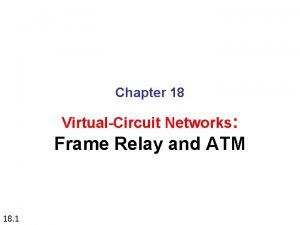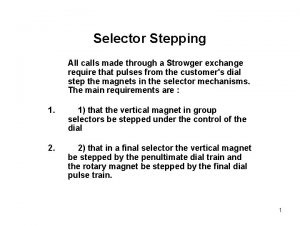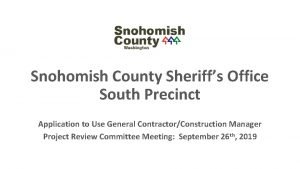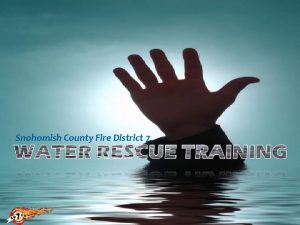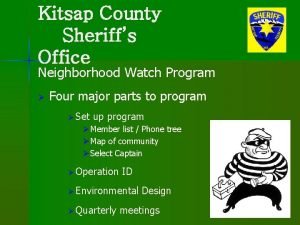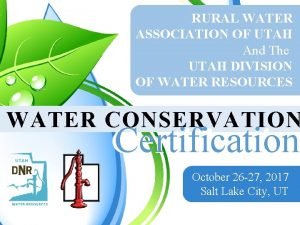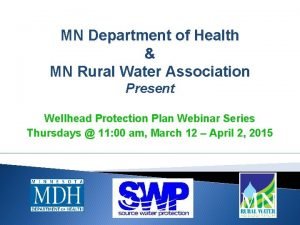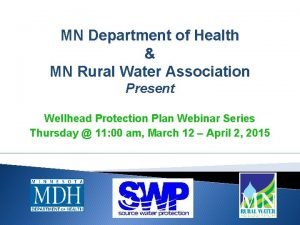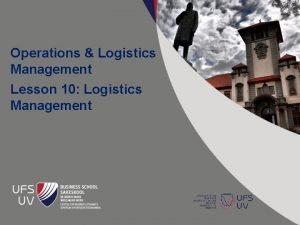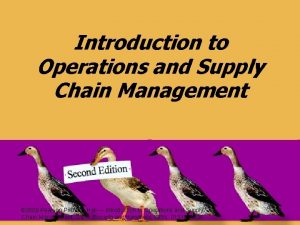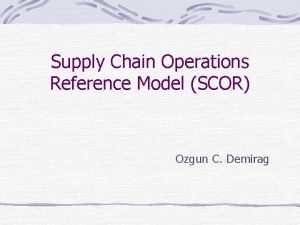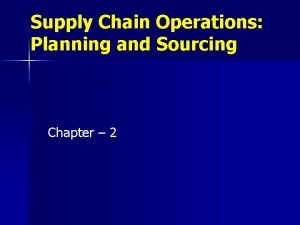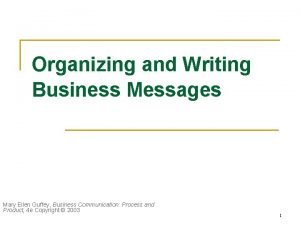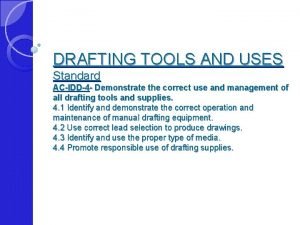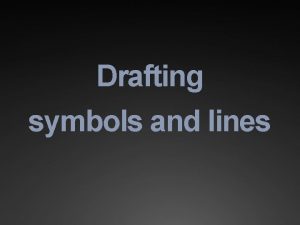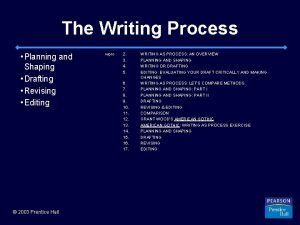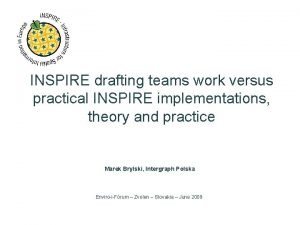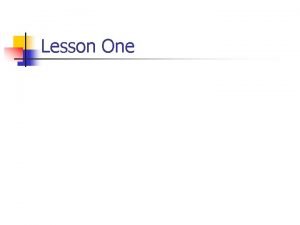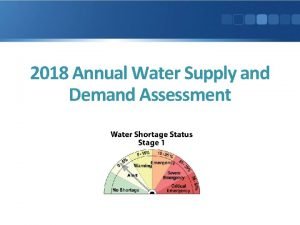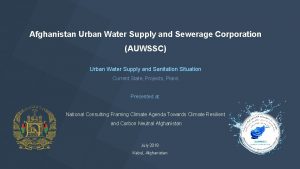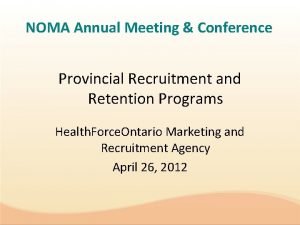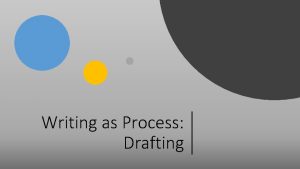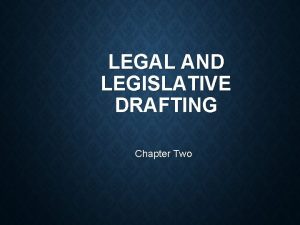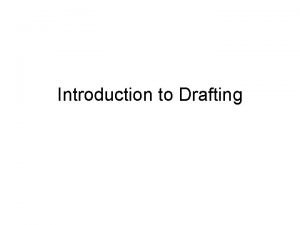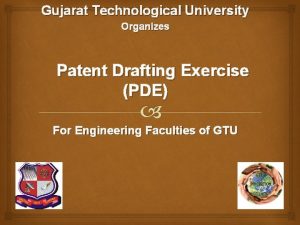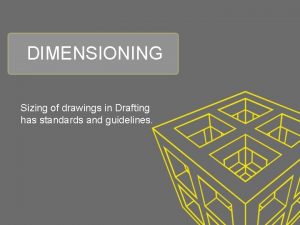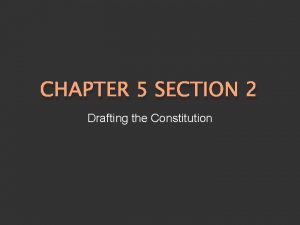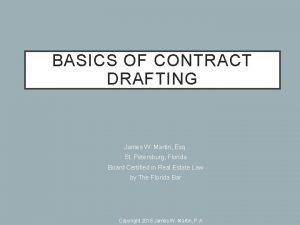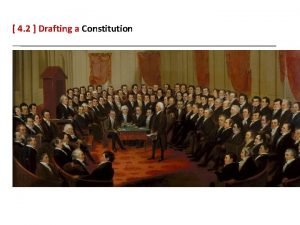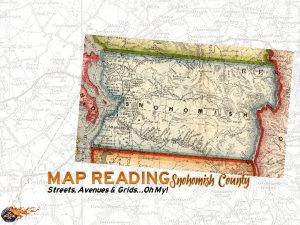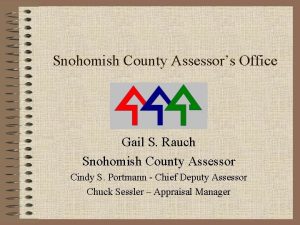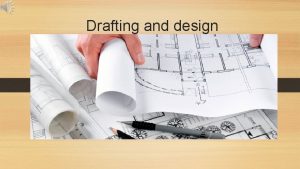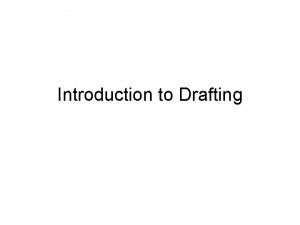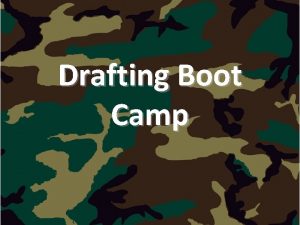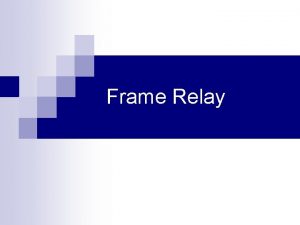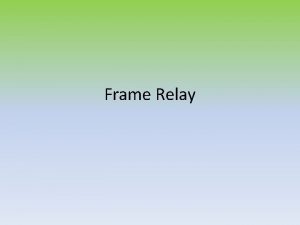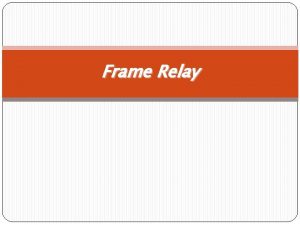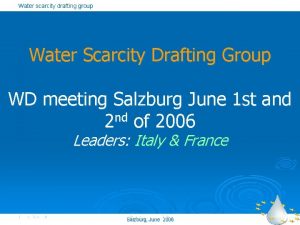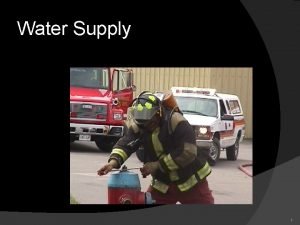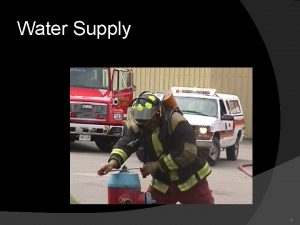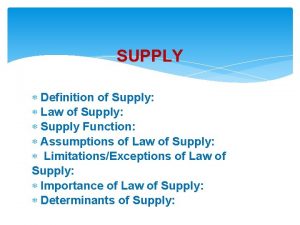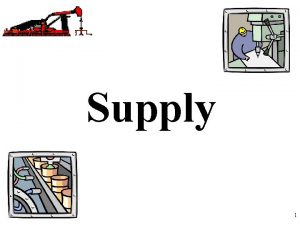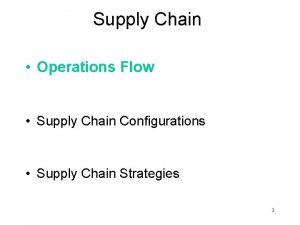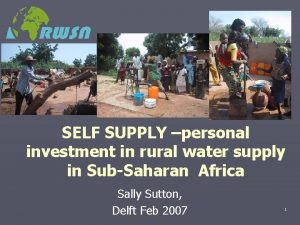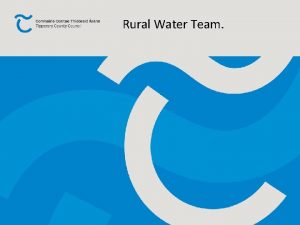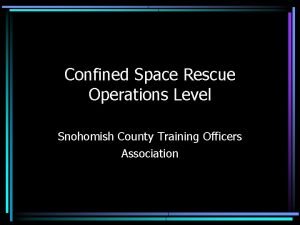Rural Water Supply Drafting and Relay Operations Snohomish







































- Slides: 39

Rural Water Supply Drafting and Relay Operations Snohomish County Training Officers 2013 Q 3

Table of Contents �Drafting � Need for drafting operations � Set up and resource considerations � Shuttle operations � Jet Siphon Operations � Limitations and Capabilities � Water Supply Officer Considerations �Relay Pumping Operations � Need for relay operations �Set up considerations �Limitations and Capabilities �Water Supply Officer Considerations

Drafting Operations

Needs for drafting � Every department needs to establish their requirements for when a drafting operation will be needed. � In most cases this will be a Gallons Per Minute (GPM) issue. � Departments may choose the nurse tender operation over drafting operations. There are many factors to consider when using the nurse tender operation: � The GPM of the nurse tender. For example T 68 max operation is 500 GPM. � The turn around time of the shuttle tenders and the fill time of the nurse tender � Some tenders only have one or two 2 ½ intake which may be slower then 500 GPM � The pump capacity of the shuttle tenders to fill the nurse tender

Limitations and Capabilities for Nurse Tender Operations �As stated in the previous slide we have to know the pump capacity of the tenders in the nurse tender operation. �AN IMPORTANT NOTE: unless specified in building phase your tank to pump plumbing will be a 3” line. This will limit you to 500 GPM. So regardless of you pump capacity you will be limited to the 500 GPM discharge. � 500 GPM or higher should consider fold a tank operations.

Needs for Drafting �Within an area where there are no hydrants or where the hydrant is not feasible to use, a tender shuttle operation will need to be established. �A suggestion would be in a operation that is 500 GPM or more that a drafting operation be established. � Again departments will need to establish their GPM/Parameters to use when deciding to establish drafting operations. � It is also highly reccomended that a water supply officer be established when ever there is a drafting operation being used.

Set Up and Resource Considerations �Once it has been established that a drafting operation will be needed, it will be important to ensure that the draft site be set up for success as well as having the appropriate resources. �When setting up the draft site we will need to have at a minimum: �Draft Engine (the attack engine should not be used as the draft engine) �Fold – a – tank / Portable tank �Hard Suction Hoses �Strainer �Tenders to supply portable tank(s)

Set Up and Resource Considerations �Other items that are highly reccomended to have: �Jet Siphon(s) �Low Level Strainer �Supply Line Holder

Set Up and Resource Considerations �Setting up the draft site correctly will be vital for a successful operation. �A major component to setting up the draft site will be proper placment of the portable tank. � When setting up the portable tank we want to ensure that we are setting up the tank in a flat area. � The area should be clear and free and jagged edges, sharp objects, anything that could puncture the tank. � It is reccomended that you place a salvage tarp underneath the area where you are going to place the portable tank.

Set Up and Resource Considerations � Set the portable tank in a position that will enable at least two tenders to park at the portable tank at a time, as well as allow room for the draft engine to set up. (If only one tender can be used at a time it is highly reccomended that you choose another site that will enable at least two tenders at a time to be placed at the portable tank) � This will require a large enough area to set up the tank, have tenders able to back into the tank and area for the draft engine. � In most intances setting up the tank in a diamond shape will allow best access to the tank for at least two tenders. (You will need to access the draft site and choose the best option)

Set Up and Resource Considerations � If you have a supply line holder(s) it is reccomended that you place these on your tank prior to filling the portable tank. If you plan to use engines or tenders without a rear/side dump you do not want them to interfere with the tender shuttle operation. � You will setup the supply line holder(s) with enough hose to get to an area where non dump capable apparatus can assist in filling the tank. (if you are going to use more then one it is reccomended that you use offset lengths so that the non-dumpable units can line up and not stack up on each other) � Another note for when using the supply line holders is to not exceed 50 PSI (per manufacture) at the discharge port.

Set Up and Resource Considerations �Once you have picked your draft site and have it set up (position, draft engine, accessory equipment) You will then need to get your draft engine set-up. �In most instances this will be accomplished at the same time, this operation will require a great deal of coordination. Again very important to have a water supply officer established as soon as possible. �Follow department procedure for drafting operations.

Set Up and Resource Considerations � A few and tips when drafting � If your department does not carry hard suction hose, ensure that your first in tender drops their hard suction hose and equipment for the draft engine. � Try to place the hard suction up on the driver side � Ensure that all discharges and valves are closed � Ensure that all connections are tight and not allow air to be allowed to be sucked in � When placing the strainer in the portable tank try to place the strainer in lowest area of the tank � When placing the strainer give consideration to where the water is being dumped into the tank, as this will push air into the tank, and may cause cavatation. This may also cause the strainer to be pushed and possibly roll over. � When using a portable tank it is reccomended that you use a low level strainer over a barrel strainer. � In a natural water source ensure that there is at least 24” all the way around the barrel strainer � Again these are just a few tips and reminders, follow your department drafting procedures.

Set Up and Resource Considerations � When having more then one tender at the portable tank we want to ensure that only one tender is dumping at a time. � In the event that you have two tenders dumping at the same time you will have two tenders run out of water at the same time. And increase turn around times. � We only want one tender to dump water at a time, this helps ensure that we always have a tender ready to dump. � Once one is done dumping, the other one dumps, and the next tender backs in and ready to dump. (T 71 starts dumping, T 82 is ready to dump. T 71 is done dumping, T 82 starts dumping water as T 71 drives away and T 49 backs in to get ready after T 82, you follow? ) � When done dumping don’t wait until the last drop comes out, we want to ensure that we give the most water we can, but don’t want to waste time in getting the next tender in place and your tender enroute to the fill site.

Shuttle Operations �Once the draft site has been established, one or more fill sites will need to be established for shuttle operations. �Just like the draft site, a fill site needs to be set up for success, to support the overall water supply operations. �There are two essential fill sites that will be established: �A fill site that will require a draft engine �A fill site where a hydrant will be used

Shuttle Operations � In a operation where a draft engine will be needed, it is best to have these areas set up for a pre-planned operation, however this will not always be the case. � For the drafting procedure, follow your department procedures for drafting. � You will then want to set up enough lines that will enable you to have multiple tenders (or engines) at a time. The use of a manifold may work well for this operation. The water source may not allow the filling of more then one unit at a time, but by having them all hooked up it will enable a faster fill time by having them already hooked up. � These draft areas could be a stream, lake, draft hydrant � To figure out how much water is in a static source – Length X Width X Depth X Constant (Constant = 7. 5) 10 X 10 X 7. 5= 7500 Gallons � Moving water – Velocity X Width X Depth X Constant Velocity is feet moving per minute 10 X 2 X 10 X 7. 5= 1500 GPM

Shuttle Operations �When setting up a hydrant for a fill site it is reccomended to set the hydrant to get the most use from the hydrant without turning of the hydrant. �Suggested items to carry on tender: �Water Thief w/small LDH pony section � 2 Gate valves �Hydrant Wrench/Storz wrenches �Hose �When setting up the hydrant we want to get the most use from the hydrant and achieve a fast turn around time.

Shuttle Operations � When setting up a hydrant for a fill site strong consideration needs to be given to GPM that can be delivered if known. � We should try to make a connection at every port possible to the hydrant. As shown in the picture there is a gate valve on each village port and a water thief hooked to the steamer port. (If you use a water thief it is reccomended that you use a spony section as the water thiefs weigh a lot and run the risk of breaking the connection) By leaving the hydrant on at all times this will speed up turn around times. � Lines should be set up at different lengths allowing for units to park without stacking up on each other.

Shuttle Operations � Just like the draft engine fill site, we may not be able to fill more then one unit at a time, but by having the ability to have multiple units connected at the same time will ensure that as soon as one unit is full the other unit can open there intake and start filling right after the first unit. � More than one fill site may be required. This is true for either fill site scenario. � When using a hydrant for a fill site it may be necessary for more than one fill site because of GPM issues. When considering another site(s) try to use a fill site that is not on the same water main. � For deparments that do not carry a water thief or more then one gate valve on their tenders should conisder taking a manifold, 3 – 2 ½ double females and a gate valve from an onscene engine(s) to set up their fill site. This will allow you to set up a similar operation as previosly reccomeneded.

Shuttle Operations � The other consideration is the turn around time: � The turn around time and the incident overall GPM will determine the amount of tenders needed for the incident. � A water shuttle/turn around time formula should be used to help figure the amount of tenders that will be needed. � An example would be if your flowing 500 gpm and you have 2000 gallons of water availble to you and you have a turn around time of 20 minutes. You would divide overall GPM by water available = 4, you would then divide your answer (4) by the turn around time = 5. You would need a minimum of 5 tenders for this operation. � (GPM / Available Water) / Turn around time = Tenders needed � Another way to figure available water with avaiable tenders is to divide your turn around time by tender tank capacity. For example you have one tender with a 25 minute turn around time and a 2500 gallon tank = 100 GPM would be the max flow without uninterupting supply. So if you were trying to get a 500 GPM flow you would need a total of 5 2500 gallon tenders � Total Turn around Time (TTT) / tank capacity = total gpm possible without running out of water.

Shuttle Operations �When figuring out shuttle/turn around times it is best to figure on the safe side and figure for a constant flow. �Also be aware that when using a portable tank, its actual usable volume won’t be the actual tank size. A 3000 gallon tank does not mean that you have 3000 gallons of water available to you. The slope of the ground, and the venturi that is caused while drafting will affect the amount of water available.

Jet Siphon Operations �Another operation when more water is needed is to use the jet siphon. �When setting up a jet siphon operation you will need at least 2 portable tanks, 1 section of 1 ¾ hose, 1 10’hard suction (preferably 6”) and 1 jet siphon.

Jet Siphon Operations � To set up this operation when planning your draft site this will need to be considered as a possible option: � When you set up your portable tanks you set them up next to each other. The draft engine will draft from the closest portable tank. � Tenders will dump into the furthest away dump tank, the tanks need to be setup so that at least two tenders can be setup at a time. � The jet siphon will be screwed into the 6” hard suction and the 1 ¾ will be hooked into the jet siphon. � The hard suction (jet siphon side) will be � placed in the portable tank that is being dumped into. The hard suction will need to be secured to the portable tanks. � If both ends are under the water and you shut off the jet siphon/1 ¾ you run the risk of equalizing the tanks as shown in the picture.

Jet Siphon Operations � It may be necessary to fill the portable tank that is being drafted from first. �Once a draft has been established the draft engine will charge the 1 ¾ that supplies the jet siphon. �Based on a test utilizing a 6” hard suction hose and the jet siphon, with the jet siphon set with the slide set all the way out, flowing 200 GPM through the 1 3/4 , they were able to flow 1000 GPM from one tank to another. (1200 GPM Total – the 200 GPM from 1 ¾ = 1000 GPM) The same test was done flowing 100 GPM through the 1 ¾ and 300 -400 GPM total was achieved = 200 -300 GPM after 100 GPM through 1 ¾.

Jet Siphon Operations � In the test the 1000 GPM was achieved flowing 200 GPM at 80 PSI (50’ 1 ¾) to eqaul a total of 1200 GPM – 200 GPM = 1000. � By using the 1 ¾ from the draft engine this will use your available water for supply. � If you have a 1500 GPM pump and you are using 200 GPM then your max available for supply will be 1300 GPM � In certain situation you may consider setting up another engine whose only responsibility is to control the jet siphon. In this scenario the engine used for jet siphon will draft from a portable tank and supply the 1 ¾. � If more then 1000 GPM is needed you can set up multiple jet siphons from one tank to another. � It may also be necessary to set up more than two tanks for this operation. � It is reccomended that if you have the jet siphon that you test your equipment so that you know you have to do to achieve your requried flows.

Limitations and Capabilities �For drafting and jet siphon operations there a few things to consider for your limitations and capabilities. � Portable Tank Operations �When drafting from a portable tank you need to consider the limitation of water avaiable to use in the tank The flatness of the surface will affect the amount of water that will be available to be dumped in the tank. The strainer that is used will affect the overall available water

Limitations and Capabilities Using a 3000 Gallon Portable tank utilizing a 6” barrel strainer and 6” hard suction flowing 500, 600, 800, and 1000 GPM it was found that once there was a venturi that effected the drafting operation it left approx. 1000 gallons of water in the tank. There was very little difference worth noting in the different GPM’s, the times shortened to cavatation with the higher GPMS. Conducting the same test utilizing a low level strainer (instead of barrel strainer) there was approx. 500 gallons of water in the tank. If it is possible to use a medical glove blown up, balloon, beach ball, etc. , this will effect the venturi and thus the more water you can achieve from the tank. Flowing 500 GPM using a blown up medical glove, the test was able to achieve flow until approx. 250 gallons were left in the tank.

Water Supply Officer Consideration �Follow IMS system and department procedures for water supply officer. � If established prior to draft site set-up, cooridinate draft site set up. � Obtain total GPM being used for incident � Figure the amount of tenders needed for operation based on GPM and turn around time � Cooridnate draft, dumping, shuttle, and fill site operations � Consider other frequency for water supply operations?

Needs for Relay Operation �When do we need to set up relay operations? � Essentially when the friction over comes the GPM that is needed is when we will need to establish relay operations. � Relay operations can be done either from a draft or pressurized water source.

Needs for Relay Operation �In a drafting scenario there will always be some sort of relay scenario. From the draft engine to the attack engine. � In the event that friction and/or elevation over come the capabilities and limitations more pumpers will need to be inserted into the supply hose for a relay operation. � The water supply officer will be responsible for figuring out the relay operation and engines required for a successful operation.

Needs for Relay Operation � When performing a drafting operation the draft engine should be of higher or equal GPM to the attack engine. � There are many factors that should be considered when performing the relay operation. �The source pumper should be equal to, or higher GPM of the attack pumper (especially in a drafting scenario). �The Total GPM needed to be achieved �Distance between the source and the attack pumper �Friction Loss of the hose �Elevation +/�Limitations of the pump capacity From a draft every 50 PSI above 150 PSI the pump capacity reduced by 25%. 1500 GPM @ 150 PSI, 1000 GPM @200 PSI, 750 GPM @ 250 PSI

Needs for Relay Operation � Limitations of the hose �NFPA 1962 �NFPA 1961

Needs for Relay Operation �Essentially what the limitations on the hose is saying is that you should not operate any higher than 10% of the service test of your supply hose. � Hose Service tested at: � 200 PSI = 180 PSI MAX � 250 PSI = 225 PSI MAX � 300 PSI = 270 PSI MAX �Ensure that you know what your supply hose is tested at prior to doing a supply operation. �This should be a limiting factor to consider when performing a relay operation.

Needs for Relay Operation � When supplying another engine/relay operation, you need to figure out what your max that you can pump based off of your limitations. � Limitation considerations will be your GPM delivery, either drafting or from a pressurized source the available water will control the max amount that can be supplied. � When drafting and 1000 GPM is needed (using a 1500 GPM Pump) the max that the draft engine can pump will be 200 PSI. This will be used when figuring how many engines will be needed and where they are placed. � The other consideration when completing the relay operation is the relay and attack pumpers intake. We want to ensure that we have 50 psi in their intake/compound. � So when figuring the relay formula we do not want to exceed 150 PSI to ensure that we give the attack pumper the needed gpm as well as a positive intake

Needs for Relay Operation �In the scenario 1000 GPM is needed to be supplied 1000’ with no elevation loss and LDH that is service tested at 250 PSI �A simple formula can help in figuring how many relay pumpers and needed and how many feet to place them. � Friction Loss (FL) / MAX PSI – 50 PSI X 100’ of hose = Placement of engines. � 20 PSI / (200 PSI – 50 PSI) = 150 = 7. 5 X 100’ = 750’ Place engine at least every 750’. �Another easy method if to figure your max GPM that you can deliver is to figure you FL per 100’. � Flowing 1000 GPM in 4” is 20 PSI FL per 100’. Multiply 20 until that number is equal to or less then 150 PSI. �For this scenario – 20 X 7= 140 PSI. So we will need an engine every 700’ at the max. For this given scenario only one relay pumper will be needed. A total of three engines will be needed.

Needs for Relay Operation �When performing a relay operation from a hydrant the same rules apply as they do in drafting except for the big limiting factor will be the water source. The water source GPM will effect the operation greatly if the needed GPM cannot be achieved. �The next limiting factor will be the limitations of the hose. FL with Elevation +/- will effect when that limitation is reached. � If your department has a procedure and max psi for relay operation follow your departments procedures.

Needs for Relay Operation �There are many factors that will effect the relay operation. Friction, elevation, pump limitations, hose limitations, water supply limitations, and resource limitations. �It will be very important for the water supply officer to consider all of these things when performing a relay operation.

Tenders Available in Snohomish County �T 31 – SCFD#3 �T 87 – SCFD#17 �T 51 – SCFD#5 �T 94 – SCFD#19 �T 71 – SCFD#7 �T 95 – SCFD#19 �T 82 – Lake Stevens Fire �T 49 – SCFD#21 �T 65 – Marysville Fire �TE 49 – SCFD#21 �T 90 - NCFA �T 68 – SCFD#22 �T 96 – NCFA �T 89 – SCFD#23 �T 97 – NCFA �T 38 – SCFD#24 �T 60 – SCFD#15 �T 37 – SCFD#25 �T 85 – SCFD#16 �T 53 – SCFD#26

The End � For comments or questions regarding this power point contact Jeremy Stocker – jeremy. stocker@gmail. com This presentation shared by Getchell FD
 Water and water and water water
Water and water and water water Atm vs frame relay
Atm vs frame relay Supply relay of pantograph selectors
Supply relay of pantograph selectors Snohomish county coordinated entry
Snohomish county coordinated entry Biocleanse plus
Biocleanse plus Snohomish county sheriff's office south precinct
Snohomish county sheriff's office south precinct Snohomish county fire district 7
Snohomish county fire district 7 Kitsap county sheriff's office
Kitsap county sheriff's office Rural water of utah
Rural water of utah Minnesota rural water association
Minnesota rural water association Mn rural water
Mn rural water Introduction to operations and supply chain management
Introduction to operations and supply chain management Introduction to operations and supply chain management
Introduction to operations and supply chain management Riset operasi
Riset operasi Chapter 5 section 1 supply
Chapter 5 section 1 supply Matching supply and demand in supply chain
Matching supply and demand in supply chain Scor levels
Scor levels Supply chain operations planning
Supply chain operations planning Example of analysis paragraph
Example of analysis paragraph Used when drawing horizontal lines and support triangles
Used when drawing horizontal lines and support triangles Skew lines symbol
Skew lines symbol Shaping and planning process
Shaping and planning process Exercise on noting and drafting
Exercise on noting and drafting Inspire drafting and design
Inspire drafting and design Disadvantages of indirect cold water system
Disadvantages of indirect cold water system Annual water supply and demand assessment
Annual water supply and demand assessment Auwssc
Auwssc Ang elastisidad ng supply ay?
Ang elastisidad ng supply ay? Hfojobs
Hfojobs The writing process drafting
The writing process drafting Bill drafting software
Bill drafting software Objective of drafting
Objective of drafting What is drafting
What is drafting Pde form 2 gtu
Pde form 2 gtu Running dimensioning
Running dimensioning Chapter 5 section 2 drafting the constitution
Chapter 5 section 2 drafting the constitution Drawing chapter 1
Drawing chapter 1 Contract drafting basics
Contract drafting basics Technical drawing also known as drafting
Technical drawing also known as drafting Drafting of the constitution
Drafting of the constitution

